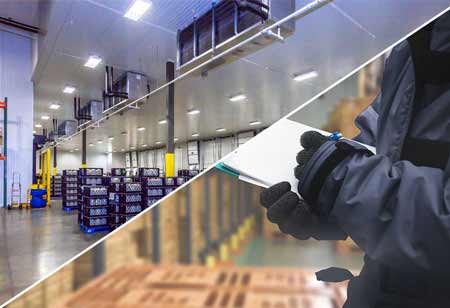Thank you for Subscribing to Construction Business Review Weekly Brief

Leveraging Cold Storage for Natural Cooling Solutions
Cold storage is transforming architecture beyond its traditional role in preserving perishables. From climate-controlled oases to energy-efficient cooling, and green data centers to disaster relief shelters, it offers versatile and sustainable solutions.
In architectural innovation, cold storage, traditionally associated with preserving perishables, is taking center stage as a versatile and sustainable solution with applications far beyond food preservation. Architects and engineers are harnessing the unique thermal properties of cold storage to reimagine its role in the architecture of tomorrow, introducing creative and eco-friendly features that redefine the concept of building design.
Climate Control Oasis: In regions grappling with scorching summers, architects are exploring using cold storage facilities to create climate-controlled oases within public buildings. Spaces like libraries, community centers, and hospitals could integrate dedicated cold storage areas accessible to the public, offering a thermally stabilized refuge during heatwaves, particularly for vulnerable populations.
Energy-Efficient Cooling: Cold storage's inherent insulation and cooling capabilities are being leveraged to regulate building temperatures naturally. By integrating cold storage units into a building's core, architects can tap into the cool air to cool adjacent spaces passively. This innovation reduces reliance on traditional air conditioning systems, leading to significant energy savings and a smaller environmental footprint.
Green Data Centers: Data centers, notorious for their heat generation and environmental impact, are finding a sustainable alternative in cold storage technology. Immersing servers in chilled fluids within a cold storage environment enhances heat dissipation efficiency, drastically reducing energy consumption and carbon emissions.
Food Security and Sustainability: Urban farming initiatives incorporate on-site cold storage, seamlessly integrating rooftop greenhouses or vertical farms with cold storage facilities. This ensures efficient storage of harvested produce, addressing food waste concerns and promoting hyperlocal food systems in urban environments.
Disaster Relief and Emergency Shelters: Cold storage units are being repurposed as temporary shelters during natural disasters or humanitarian crises.
With pre-existing refrigeration infrastructure, these units provide a cool, sanitary environment for displaced individuals, offering a critical solution in regions with extreme heat or limited access to electricity.
Art and Cultural Preservation: The stable and controlled environment of cold storage is becoming indispensable for preserving delicate artworks, historical artifacts, and archival materials. Museums and libraries can utilize cold storage technology to extend the lifespan of precious collections, ensuring their cultural legacy endures for generations.
Medical and Research Applications: The precise temperature control within cold storage units makes them ideal for storing sensitive medical supplies, vaccines, and biological samples. Research laboratories are utilizing cold storage chambers for experiments requiring specific temperature-controlled environments, enhancing the reliability of scientific research.
Sports and Recreation Facilities: Imagine Olympic stadiums with integrated ice rinks accessible year-round, even in tropical climates. Cold storage technology is making this vision a reality, enabling continuous enjoyment of cold-weather sports like ice skating and ice hockey.
Luxury Amenities: High-end residential buildings and hotels are incorporating cold storage features as exclusive amenities. Private walk-in cold rooms for premium food and beverages or spa treatment rooms utilizing cold therapy offer residents and guests unique and luxurious experiences.
Architectural Innovation: The unique aesthetic of cold storage facilities is inspiring creative architectural expressions. Buildings with exposed cooling pipes, translucent insulated walls, or rooftop ice gardens are blurring the lines between utility and visual intrigue, creating structures that are not only functional but also visually captivating.
As technology advances and sustainability comes to the forefront, architects and engineers continue to push the boundaries of cold storage integration, shaping a future where buildings are not only functional but also innovative, environmentally conscious, and conducive to the well-being of their occupants. Cold storage has transcended its traditional role, emerging as a key player in the evolution of sustainable and forward-thinking building design.








